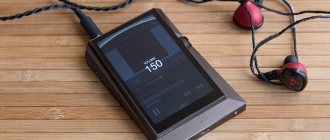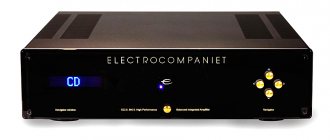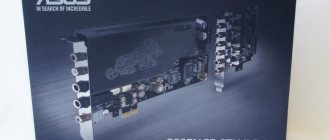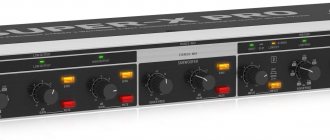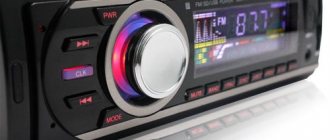In an age when smartphones are actively and quite successfully replacing gadgets familiar to many, such as cameras (almost no one buys point-and-shoot cameras anymore), players, navigators, game consoles, etc., the question is: why buy a media player, and even for a lot of money, sounds quite reasonable.
Here it is necessary to clarify that I do not mean MP3 players, which in reality, like point-and-shoot cameras, have practically disappeared from the market, but rather HI-FI solutions. I will try to answer this question for myself, and at the same time review the interesting player AK70 MKII.
As the name suggests, this is already the second generation of the player. Astell & Kern is known primarily for premium solutions for a lot of money. But the competition in the market is enormous, every day a new Chinese brand appears with HI-FI products. So, even Astell & Kern still has to release very expensive, budget solutions. Externally, the AK70 MKII is not much different from its predecessor, all the most delicious changes are inside, but first things first.
Characteristics
| DAC | Cirrus Logic CS4398 x2 (dual) |
| Frequency range | Unbalanced: ±0.11 dB (20 Hz - 20 kHz) / Balanced: ±0.09 dB (20 Hz - 20 kHz) Unbalanced: ±0.5 dB (10 Hz - 70 kHz) Balanced: ±0.5 dB (10 Hz – 70 kHz) |
| Signal to noise ratio | 119 dB |
| Housing material | aluminum |
| Screen | 3.3″ WVGA (480 x 800) touch |
| Supported Audio Formats | WAV, FLAC, WMA, MP3, OGG, APE, AAC, ALAC, AIFF, DFF, DSF |
| Max. sample rate/bit depth | 192KHz/24bit, higher resolution files supported with downsampling |
| Output level (no load) | Unbalanced 2 Vrms / Balanced: 4 Vrms |
| USB DAC | up to 96 kHz/24 bit |
| Entrance | Micro-USB type B (for charging and data transfer - PC and Mac) connection mode: MTP (Media Device) |
| Exits | for headphones (3.5 mm), balanced (2.5 mm, 4-pin) |
| Wireless interfaces | Wi-Fi 802.11 b/g/n (2.4 GHz), Bluetooth 4.0 (A2DP, AVRCP, aptXtm HD) |
| Battery | 2500 mAh (3.7 V) |
| Dimensions | 62.8 x 96.8 x 15.2 mm |
| Memory | 128 GB (NAND) + MicroSD (max. 256 GB) |
| Weight | 150 g. |
Compatibility
Even the first generation AK70 was quite powerful enough for most portable headphones, and the balanced output of the Mk II was almost doubled in voltage, which, provided that it is reconnected to a 2.5 mm plug, will help to drive even fairly tight models (naturally, without fanaticism). The 70 also behaves quite well with sensitive headphones; in the most “delicate” models, noise can be heard, but there are not many such headphones.
Stylistically, the player is universal, although the signature midrange presentation is especially impressive with the live voices of typical performers and well-recorded instrumentals. The player is moderately tolerant of recording quality, somewhere around 6 on a 10-point scale.
By tradition, several tracks serve as examples.
Ozzy Osbourne - Crazy Train. I don’t know about anyone, but the voice of the “king of metal” bothers me a little, especially on old recordings and sources with a monitor-neutral presentation. Fortunately, popular albums are often remastered (the link is the remaster), and for everything else there is Astell&Kern. The player's signature midrange slightly brightens up the raspyness of the vocalist's voice, at the same time carefully emphasizing emotions and excellent guitar solos, allowing you to enjoy the “best sides” of an unconditional hit.
Nemanja Radulović - Csárdás. Of course, Csardas is Hungarian music, but in the boiling cauldron of the 20th century, nations and peoples changed so often that the brilliant Serbian violinist Nemaja Radulović can also be considered “one of our own” for this music. Moreover, he performed this number with truly Balkan enthusiasm and energy. If you add to this a good player in the form of the AK70 Mk II, which effectively conveys the nuances of live music (listen, for example, to the last seconds of this track), it will be difficult to sit still. By the way, in general I can recommend the entire album “Journey East”, from which I took this recording - an excellent example of not boring violin music.
Stacey Kent - To Say Goodbye. In general, 2022 was quite rich in wonderful jazz releases, which sometimes ended up in my collections, but winter and the upcoming holidays evoke a certain mood, so I chose this track. Warm, lost in time (as if it came from the 60s), the lyrical melody performed by AK70 receives an additional bonus of effectiveness and, like a glass of mulled wine, warms you from the inside.
Contents of delivery
The player is packaged in a nice black cardboard box. The seller also sent a cover as a gift, for which special thanks.
The set includes a player, protective films on both sides, Micro USB for charging and connecting to a computer, a warranty card and instructions in English. In general, nothing extra was included, not even earbuds, but this is understandable - anyone who intends to buy such a player will clearly be dissatisfied with any complete headset.
Leather Case.
DAC – Cirrus Logic CS4398
A time-tested digital-to-analog converter, the standard in the mid-price range is only the Cirrus Logic CS4398 . This chip is found on the ones we previously reviewed: Colorfly C4 Pro, FiiO X3 II, Astell&Kern AK T1, Astell&Kern AK500N.
Appearance and ergonomics
The best words to describe the appearance of the device are brevity and simplicity. Steve Jobs would definitely appreciate it. Externally, it is a rectangle made of brushed aluminum with a beveled right edge and a volume control wheel. There is no play in the wheel, it runs smoothly, the clicks are clear. The screen is small 3.3″ and has a TFT matrix, but the brightness margin is quite sufficient and is quite visible in bright sunlight. The viewing angles are good, but for this size this is not important - you can’t watch videos on it. Below the screen there is a light sensor and a touch-sensitive return button. The build quality is very high, no complaints.
On top there is a power button, as well as two headphone jacks: a regular 3.5 and a balanced 2.5.
On the left side there are navigation and playback buttons, as well as a slot for MicroSD cards. At the bottom there is a Micro USB input. Despite the fact that the player is completely new, the popular USB Type-C is not here, apparently you will have to carry a bundle of wires or adapters with you for a long time.
The ergonomics are pleasant, it fits comfortably in the hand and does not slip at all. The player weighs about 150g, which allows you to feel it in the palm of your hand, but nothing more. It fits in a trouser or jacket pocket without any problems and doesn’t get caught on anything. In general, there is nothing to complain about, I really like it. The red color looks cool.
Sound
The main difference between the AK70 MKII and the previous model is inside - there are two CS4398 DACs, one for each channel - left and right. This, along with improved gain, helped reduce jitter (unwanted phase and/or frequency random variations in the transmitted signal). Here it must be said that this DAC is far from the latest and new models have better characteristics. However, the same combination of two CS4398s was used on one of the company’s most successful models, the AK240, so the “old” DAC is not a death sentence.
The player can play Hi-Res audio files up to 24 bit/192 kHz. For files with a higher frequency, downsampling will be played.
I tested the player on wired headphones Fiio EX1, Audeze iSine 10 and Beyerdynamic DT 990 PRO.
If the first two models are intended primarily for use with smartphones and portable players, then 250 Ohm buyers are quite sensitive to the source power. And the completely audiophile LG V30+ cannot pump up these ears. The AK70 MKII is a completely different matter - there is enough power with a good margin.
The player's sound is clean and clear, with a slight bias towards darkness. All frequencies play in a balanced manner. The bass is slightly accentuated - dynamic, but without excesses, it is slightly softened and this benefits the overall picture. Mids and highs play clearly, but are a little lacking in detail. Instrument separation is good, the sound stage is very wide, I would even say very wide - this is especially noticeable on buyers.
We were able to compare this player with the FiiO X7 Mk II. The sound of the premium model from FiiO is more neutral, academic and detailed, which is most noticeable in the HF. But, at the same time, subjectively, the sound of AK is more interesting due to its more emotional presentation.
Comparison with the LG V30+ will clearly not be in favor of the latter, even if you check only on the plugs. Despite the fact that the V30+ has excellent sound, like for a smartphone, and has a more recent ES9218+ DAC, its sound is clearly not up to par with the AK.
However, when testing wireless headphones, AK no longer has an advantage. The sound is similar with the LG V30+. Let me remind you that the player supports Bluetooth 4.0 and the AptX HD codec, just like LG. Tested on Sony MDR-1ABT and Bang&Olufsen BeoPlay H5. The sound has lost some detail and clarity compared to wired ears, but the sound is nonetheless decent.
Firmware
The “software” of the AK70 Mk II is, naturally, based on the developments of older models. By the way, a completely different firmware was developed for Ultima, but it has not yet reached the more accessible segment.
After loading, we are greeted by the media library screen, there are traditional viewing options by folder, genre, artist and album. There are also items with playlists and a complete list of all tracks. The menu item responsible for online services in localization has become “Save” (the translator who decided to translate “Store” in this way needs to drive a nail into his head). There are traditionally two of these services: TIDAL and Groovers+. Scanning files is very fast, the player works well with non-Latin scripts, is not capricious in choosing formats - in general, it behaves as befits a noble device.
There are few settings, and almost all of them can be switched from the “curtain” that drops down at the top: wireless interfaces, input/output functions, brightness, and so on. There is also a button that opens advanced settings, which, however, are not much more. The player, along with its older brothers, received WiFi 802.11n with support for the AK Connect function, Bluetooth with aptX HD codec, the ability to wirelessly update, and even support for an external “ripal” drive, which A&K sells for 300 dollars or so. It’s not that this is a useful feature (aptX HD is much more useful), but it’s always better to have a feature than not to have it.
The playback screen is also quite well thought out, there is all the necessary information, including detailed information about the track and the ability to display the lyrics of the song embedded in the tags.
In general, the firmware here is exactly what a top manufacturer should have, stability and convenience are a balm for the souls of users who are tormented by Chinese programmers.
USB DAC and streaming on your home network
The player can also be used as an external sound card for a computer in USB-DAC mode. This mode supports sampling rates up to 96 kHz/24 bits, which is, of course, higher than built-in sound cards, but inferior to specialized solutions, especially at the same price. The sound is good but not outstanding, slightly better than my old ESI Dr.Dac nano sound card.
It is also possible to stream music via Wi-Fi on your home network using the DLNA-based AK Connect application. The function is very interesting - you can install MQS Streaming Server on your computer, specify folders with music, and it becomes automatically available for listening on the player. However, there is also a fly in the ointment - some files played with freezes, although Wi-Fi is stable and the connection speed is high. This greatly spoiled the listening experience.
Personal observations and conclusions
As a result, we have a compact player with very high-quality live sound, polished firmware and good ergonomics. In music, the most important thing for me is personal perception - you either like the sound or not, and all the technical details are no longer so important. How good a gadget is is determined by whether I want to use it or whether it’s gathering dust on the shelf. In the case of the AK70 MKII, I noticed that I almost stopped using the phone, and more and more often I try to listen to music, and not just play it in the background.
So are media players still needed if there are smartphones with high-quality sound? I would answer that if really cool sound is important to you and you have good wired headphones, then absolutely. I get a real kick out of traveling, listening to music while still being able to use my phone without worrying about charging. For sports or listening in noisy places, for example, on public transport during rush hour, the player is redundant - you still won’t be able to enjoy the sound. There is also little point in using the player with wireless headphones - any modern smartphone will provide quality that is no worse, and maybe even better (LDAC?).
Finally, a bonus photo of Riga.
- 2
- 1
Why do you need a portable player?
Astell&Kern offered the ultimate solution: the AK70 MKII , which combines several functions and does not have the disadvantages of traditional audio players.
AK70 MKII is the cheapest in the company’s line, but it can do the same thing as the most serious systems: play even the most “fat” Hi-res, with or without wires, outdoors and as part of a home audio system.
You heard right: this tiny player can act as the external DAC of a high-end desktop audio system. Support for loseless wireless transmission is also very rare, and not only in portable equipment.
Well, in which smartphone can you find everything that is in the AK70 MKII? See for yourself:
- dual DAC for full balanced connection with bit decoding,
- extremely low distortion of all types,
- aptX HD support with DSD ,
- work as a sound card, external DAC and multimedia network (!) storage.
We add an affordable (by analogues’ standards) price and we get a hit.

